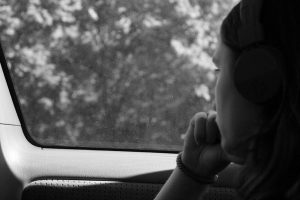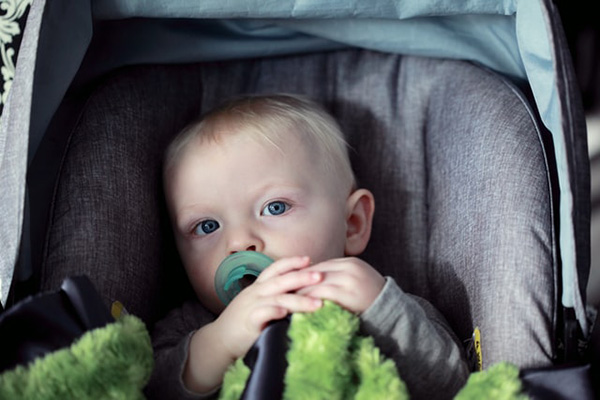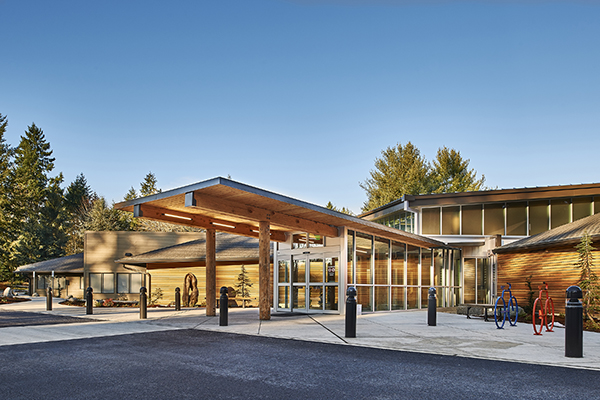Five Tips to Lessen the Symptoms of Seasonal Affective Disorder

The dark and gloomy winter days affect us all differently, and it can sometimes bring on feelings of depression. The phenomenon is known as Seasonal Affective Disorder (SAD), and though some in sunnier states might shrug it off, we in the Pacific Northwest know it all too well.
To better learn what steps we can take to combat SAD, we spoke with Rene Czerwinski, a licensed mental health counselor at Pacific Medical Center in Totem Lake.
Q: How many people does Seasonal Affective Disorder impact in the Northwest?
A: While I don’t have the exact data for the Northwest, research shows as many as 10 percent of people in the U.S. suffer from Seasonal Affective Disorder (SAD). It is up to four times more common in women than men, and the common age of onset is between 18 and 30. SAD is affected by the amount of light to which we are exposed, so those in colder northern climates may be at a higher risk.
Q. When do symptoms of Seasonal Affective Disorder typically start and end?
A: Symptoms can be different for everyone. If you notice during the “fall back” daylight saving time change it is taking you longer to adjust to a new schedule, especially with your sleep, this may be a sign of SAD. Typically, it should not take longer than two weeks to adjust. Symptoms can start to lessen in severity as the sun comes out more and the days get longer, usually in the Northwest this would be late Spring. The grayer the days are, the longer some symptoms can last.
Q. Is it something people should ask their doctor about?
A: Yes, absolutely. Talk to your care provider and share what symptoms you are experiencing. If you are prone to depression or have a family history of depression, you may be more susceptible to SAD. If you are on anti-depressants, share your symptoms regularly and your primary care provider or psychiatrist can make adjustments if needed.
Q. What are five ways to help yourself cope with Seasonal Affective Disorder?
A: Sleep is a very important way to lessen symptoms. This means keeping on your normal sleep schedule, even as it gets darker earlier and our mind sometimes tells us it’s later than it actually is. Good sleep hygiene includes getting up at the same time every day, following a bedtime routine to program your body to sleep, keeping the temperature in your room at 68 degrees, and keeping your room dark at night. I also recommend avoiding TV, computer and phone use for at least 30 minutes before bed.
Light therapy has shown promise in many studies. There are a variety of “happy lights” that are purchasable at various price points to help combat the darker days. Some also used alarm clocks that slowly lighten up the room (mimicking the rising sun) as it gets closer to the time the alarm will go off, helping provide a natural waking. Another option for those not interested in light therapy, is getting outside for 5 to 10 minutes when the sun is out, even if it’s cold outside. Whether you take a quick, brisk walk around the outside of the office building or go for a walk at lunchtime, the natural rays can help.
Exercise is helpful for all types of depression, as it increases the production of endorphins in the body, which are neurotransmitters that make you feel good. Try to get 30 minutes of exercise three to five days per week. This can be light exercise, such as walking, or more vigorous activities like running.
Vitamins have been proven in some studies to help with SAD. Vitamin D and B help bridge the gap to making one feel better, helping to increase energy and promote happier moods. However, consult with your care provider before taking any new vitamins.
Lastly, aromatherapy and essential oils also can help. It is scientifically proven that certain scents affect our brains and bodies in different ways. Lavender is often associated with sleep and calmness. Eucalyptus, grapefruit, cinnamon, peppermint, and cedarwood have qualities to increase energy and wakefulness. Aromatherapy diffusers can be used in an office, home, and even cars. If using essential oils, consult with professionals and your care provider, as some individuals can experience allergies.
What you need to know about the new AAP car seat safety guidelines
 The American Academy of Pediatrics (AAP) recently released revised car seat safety guidelines, removing previously recommended age limits.
The American Academy of Pediatrics (AAP) recently released revised car seat safety guidelines, removing previously recommended age limits.
Kids are safest in the rear-facing position, until they outgrow the weight and height restrictions of their individual car seats.
There’s nothing as sweet as a sleeping young child who is safely secured into his or her cozy car seat. As a parent or parent-to-be, you probably researched car seat reviews for hours to find the perfect model; after all, this car seat was likely the first major health and safety-related purchase for your child.
You should know that the American Academy of Pediatrics (AAP) recently changed their safety guidelines for child car seats. Read on to make sure you have the most up-to-date information, so that you can continue to keep your child safe and secure
What is new?
“The biggest change is removal of the age limit. Until a few months ago, pediatricians were encouraging kids to sit rear-facing at least through the age of two,” explains Alexander Hamling, MD, a pediatrician at Pacific Medical Centers in Seattle, WA. “Now, the focus is on their weight and their height.”
The AAP now recommends that you keep your child in the rear-facing position until he or she reaches the upper weight and height limits of the individual car seat. Because those numbers can vary car seat to car seat, you need to be familiar with them for your car seat model.
Dr. Hamling explains why the rear-facing position is the safest for young children: “If you imagine that you’re traveling in your car, driving 60 mph, and you come to a sudden stop from an accident, your body is still trying to go 60 mph. Your seatbelt is preventing most of your torso from going that speed, but your head is still trying to go 60 mph. This is where you may sustain whiplash, neck injuries, nerve injuries, muscle injuries.”
“It’s the same thing with children who would be riding in the rear of your car,” he continues. “They don’t have the necessary muscle strength to safely stop their head from moving as quickly; or, they may be asleep in the car seat and not realize an accident just occurred. When they’re rear-facing, their head is already being pressed against the back of the seat, so the force continues into that same, cushioned area. They don’t have the same risk for whiplash or overextension of their neck.”
Recent research involving child restraint effectiveness show that car seats reduce the risk of injury by 71% to 82%, and reduce the risk of death by 28% when compared with children of similar ages using adult seat belts.
Car seat safety tips:
- Always use a child safety seat for your child when riding in a motor vehicle.
- Use your child’s weight and height, not his age, to determine an appropriate car seat.
- Be familiar with the upper weight and height restrictions for your child’s individual car seat.
- Keep the child in a rear facing position as long as possible, based on his height and weight.
- Make sure the car seat is properly installed. Most car seats have multiple methods for installation; determine the one best suited for your car. It shouldn’t be able to move more than an inch in any direction.
- Be sure the straps aren’t too high, too loose, or too snug on the child. You should be able to place one finger between the strap and your child.
- Practice installing and using your car seat. You don’t want the first use to be when you’re leaving the hospital with a newborn. (Use a teddy bear for practice!)
- Bring your car seat to the airport when you travel by plane. Even if you decide not to use it while on board (i.e. for a lap infant), car seats can be checked free of charge and will be waiting for you when you arrive for use in your taxi, Uber, or car rental.
Car seat laws: Washington
Looking for a pediatrician? Find one near you in our online directory, or visit:
Help your loved one cope with loss during the holidays
 The holiday season often inspires feelings of warmth, joy, and belonging. However, for some people, this time of year is overwhelmingly marked with loneliness, sadness and anxiety — particularly after the loss of a loved one during the year. The holidays are for being with those we love the most and coping with the first holiday season (or many) after the loss of a relative or friend can be incredibly challenging.
The holiday season often inspires feelings of warmth, joy, and belonging. However, for some people, this time of year is overwhelmingly marked with loneliness, sadness and anxiety — particularly after the loss of a loved one during the year. The holidays are for being with those we love the most and coping with the first holiday season (or many) after the loss of a relative or friend can be incredibly challenging.
Although grief is universal, it expresses itself in many different ways. Friends and family members of those affected by loss are often unsure of what to say or how to act to support their loved ones who may be struggling.
Here are a few ways you can provide meaningful support and honor those in your life who may be grieving this holiday season:
Be present. You know your loved ones and you can sense when something is bothering them. Without pestering, it’s important to let them know that you are available to listen. When they are ready to talk, respect their vulnerability and turn off your phone, the TV and any distractions to let them know you are there to listen and support them. Being present can also mean simply being with your loved one. Sit next to them and be accessible in the area without being suffocating.
Grieve together. While you may feel like you need to be strong to be there for others who are struggling to cope, it’s also important to be vulnerable and honest and allow yourself the time to grieve as well. By sharing this experience, your loved one will know that they are not alone in this process and will feel less isolated during this challenging time.
Re-evaluate your holiday traditions. One reason that the holidays can intensify feelings of sadness or depression is because cherished activities trigger happy memories and can become a source of pain. If your loved one retreats from participating in the traditional holiday festivities, respectfully give them their space and let them know you’re there when they’re ready to talk.
Find new traditions to honor their memory. While the topic of loss can be difficult to discuss, it’s important to acknowledge the special memories of our loved ones and keep their legacy alive through new traditions at the holidays. If all feel comfortable, share stories and your favorite memories of that person so the younger generations of your family can learn more about them. Consider getting a special ornament in their honor that can be shared with all family members to keep their memory alive each year. Or, if they had a favorite dish they brought to each holiday gathering, carry on that tradition by bringing the same dish to future family gatherings as a nod to their memory. Remember that the new normal and traditions are not bad, just different, and may take time.
And, as always, if the grieving process ever becomes too cumbersome or starts to interfere with daily life, don’t hesitate to reach out to a mental health professional to see what support or counseling options may be available to ease the burden of grief.
IRG Health Talk presents Jay Estrada, MD on Salmonella
Dr. Jay Estrada was interviewed on IRG Health Talk radio about Salmonella.
Lacey Clinic Closes on December 14, 2018
In business and relationships, we often try new things with the best of intentions. Many of these work out, while some do not. We opened PacMed’s Lacey Clinic in 2016 to bring personalized primary and specialty care to the communities and military families in South Puget Sound.
We had trouble, however, recruiting enough qualified doctors to deliver the care our patients deserve. For this reason, we sadly closed the Lacey Clinic on December 14, 2018.
We recognize this news may come as a surprise, and are committed to fully supporting the transition of your care. Patients should have received a call and letter by mid-November, and staff will remain on hand here through December 31 to help you, at (360) 486-2800.
The following locations and providers have made appointments available and will gladly see you in their practices.
Providence Medical Group-Lacey Family Medicine (360) 486-2900
Located in the same building as PacMed Lacey
Melissa Gamble, PA-C
Family Medicine
Abraham Jeon, DO
Family Medicine
Kenneth Kooser, MD
Family Medicine
Prenatal Care
Sandra Loyer, PA-C
Family Medicine
Anna Maria A. Pletz, MD
Family Medicine
Prenatal Care
Danielle Yee, MD
Family Medicine
Prenatal Care
PacMed Puyallup (253) 435-3400
Rick Bowles, DO
Family Medicine
Marianne Broers, MD
Family Medicine
PacMed Federal Way (253) 214-1920
Marit Featherstone, ARNP
Family Medicine
Brooke Parker, DO, MBA
Family Medicine






